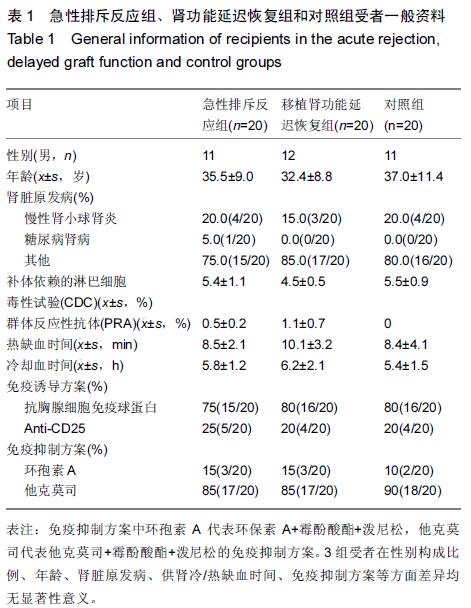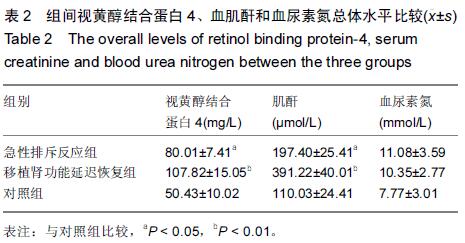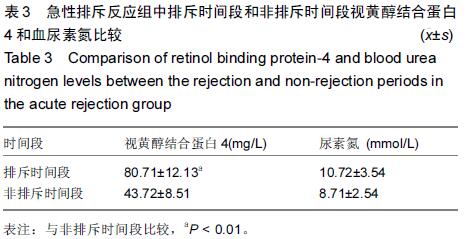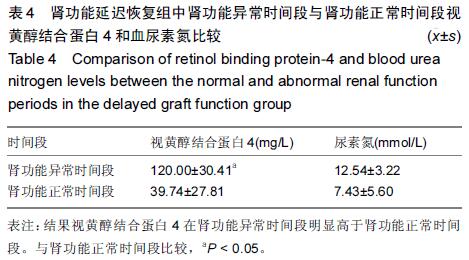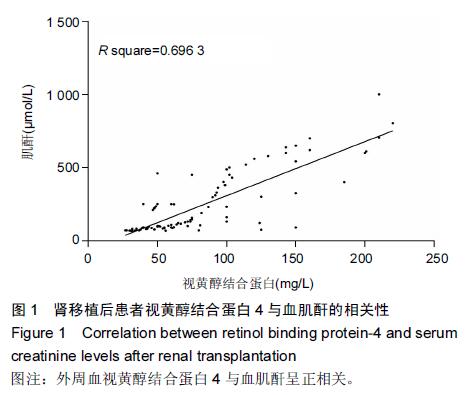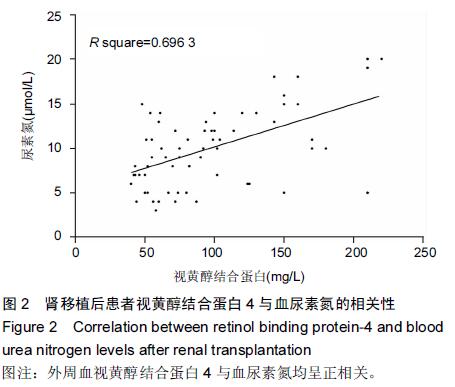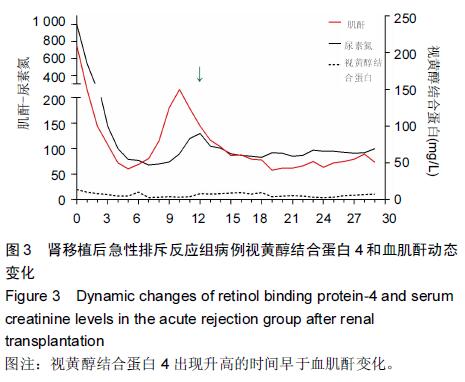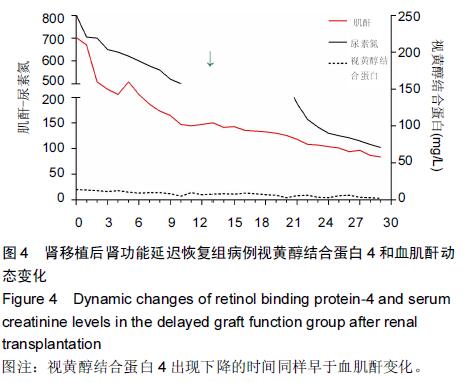[2] Toma H, Tanabe K, Tokumoto T, et al. Time dependent risk factors influencing the long-term outcome in living renal allografts: donor age is a crucial risk factor for long-term graft survival more than 5 years after transplantation. Transplantation. 2001;72(5): 940-947.
[3] Jalalzadeh M, Mousavinasab N, Peyrovi S, et al. The impact of acute rejection in kidney transplantation on long-term allograft and patient outcome. Nephro urol Mon.2015;7(1): e24439.
[4] Fonseca I, Teixeira L, Malheiro J, et al. The effect of delayed graft function on graft and patient survival in kidney transplantation: an approach using competing events analysis. Transpl Int.2015 Feb.
[5] Norden AG, Lapsley M, Unwin RJ. Urine retinol-binding protein 4: a functional biomarker of the proximal renal tubule. Adv Clin Chem.2014;63: 85-122.
[6] 朱有华,石炳毅.肾脏移植手册[M].北京:人民卫生出版社, 2010: 520-530, 535-543.
[7] 陆瀚澜,张鑫,陈瑜.尿液中IP-10、Mig和OPG含量与移植肾排斥反应相关性的临床研究[J].中华器官移植杂志, 2012: 33(11): 672-675.
[8] Smith FR, Goodman DS. The effects of diseases of the liver, thyroid, and kidneys on the transport of vitamin A in human plasma. J Clin Invest.1971; 50: 2426-2436.
[9] Blaner WS. Retinol-binding protein: the serum transport protein for vitamin A. Endocr Rev.1989;10: 308-316.
[10] Naylor HM, Newcomer ME. The structure of human retinol-binding protein (RBP) with its carrier protein transthyretin reveals an interaction with the carboxy terminus of RBP. Biochemistry.1999;38: 2647-2653.
[11] Raila J, Willnow TE, Schweigert FJ. Megalin-mediated reuptake of retinol in the kidneys of mice is essential for vitamin A homeostasis. J Nutr.2005; 135: 2512-2516.
[12] Vahlquist A, Berne B, Berne C. Skin content and plasma transport of vitamin A and beta-carotene in chronic renal failure. Eur J Clin Invest.1982;12: 63-67.
[13] Blumberg A, Hanck A, Sander G. Vitamin nutrition in patients on continuous ambulatory peritoneal dialysis (CAPD). Clin Nephrol.1983;20: 244-250.
[14] Ziegelmeier M, Bachmann A, Seeger J, et al. Serum levels of adipokine retinol-binding protein-4 in relation to renal function. Diabetes Care.2007; 30: 2588-2592.
[15] Kelleher J, Humphrey CS, Homer D, et al. Vitamin A and its transport proteins in patients with chronic renal failure receiving maintenance haemodialysis and after renal transplantation. Clin Sci.1983;65: 619-626.
[16] Zhang WX, Zhou W, Zhang ZM, et al. Decreased retinol-binding protein 4 in the sera of patients with end-stage renal disease after kidney transplantation. Genet Mol Res. 2014;13(4): 8126-8134.
[17] [Gerlach TH, Zile MH. Upregulation of serum retinol in experimental acute renal failure. FASEB J.1990;4(8): 2511-2517.
[18] Yang Q, Graham TE, Mody N, et al. Serum retinol binding protein 4 contributes to insulin resistance in obesity and type 2 diabetes. Nature.2005;436: 356-362.
[19] Graham TE, Yang Q, Blüher M, et al. Retinol-binding protein 4 and insulin resistance in lean, obese, and diabetic subjects. N Engl J Med.2006;354: 2552-2563.
[20] Frey SK, Henze A, Nagl B, et al.Effect of renal replacement therapy on retinol-binding protein 4 isoforms.Clin Chim Acta. 2009;401: 46-50.
[21] Borek C, Smith JE, Soprano DR, et al. Regulation of retinol-binding protein metabolism by glucocorticoid hormones in cultured H4II EC3 liver cells. Endocrinology.1981; 109(2): 386-391.
